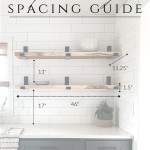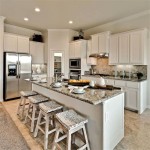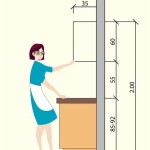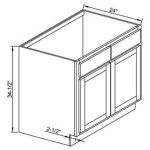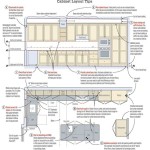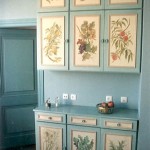Kitchen Cabinets Hardware Pictures: A Comprehensive Guide
Kitchen cabinet hardware is a crucial component of any kitchen design, influencing both the functionality and aesthetic appeal of the space. Pictures of kitchen cabinet hardware showcase the vast array of styles, finishes, and functions available, providing homeowners and designers with inspiration and guidance for selecting the perfect hardware to complement their kitchen cabinets. This article explores the various aspects of kitchen cabinet hardware, highlighting different types, materials, finishes, and design considerations. Understanding these elements is essential for choosing hardware that enhances the overall look and feel of a kitchen while also providing lasting durability and ease of use.
Types of Kitchen Cabinet Hardware
The term "kitchen cabinet hardware" encompasses a range of components, each serving a specific purpose. The primary categories include knobs, pulls, hinges, and latches. Each of these categories offers numerous sub-types, allowing for customization based on design preferences and functional requirements. Understanding the differences between these types is crucial for making informed decisions.
Knobs: Knobs are typically smaller, single-point attachment hardware pieces. They are generally used on cabinet doors and drawers, especially in kitchens with a more traditional or minimalist style. Knobs come in a variety of shapes, including round, square, oval, and decorative forms. The installation of knobs is usually simpler than that of pulls, often requiring only a single screw. They are a cost-effective option and can be easily replaced to update the look of a kitchen.
Pulls: Pulls are handles that are attached to cabinet doors and drawers with two or more screws. They offer a more substantial grip than knobs, making them ideal for larger or heavier drawers and frequently used cabinets. Pulls come in various styles, including bar pulls, cup pulls, and appliance pulls. Bar pulls are sleek and modern, while cup pulls offer a vintage or farmhouse aesthetic. Appliance pulls are larger and designed to withstand the weight and use of refrigerator and dishwasher doors.
Hinges: Hinges are the mechanisms that attach cabinet doors to the cabinet frame, allowing the doors to swing open and closed. There are several types of hinges, including concealed hinges, surface-mounted hinges, and wrap-around hinges. Concealed hinges are hidden from view when the door is closed, providing a clean and seamless look. Surface-mounted hinges are visible and can add a decorative element. Wrap-around hinges provide extra support and are often used on heavier doors. The choice of hinge depends on the cabinet style, the door weight, and the desired aesthetic.
Latches: Latches are used to keep cabinet doors securely closed. While not always necessary, they can be particularly useful for overhead cabinets or cabinets with heavier contents. Magnetic latches are a common option, using a magnet to hold the door in place. Other types of latches include roller catches and touch latches. The selection of latches depends on the specific needs of the cabinet and the desired level of security.
Materials and Finishes of Kitchen Cabinet Hardware
The material and finish of kitchen cabinet hardware significantly impact its durability, appearance, and overall aesthetic. Common materials include stainless steel, brass, bronze, nickel, and zinc. Each material offers different characteristics in terms of corrosion resistance, strength, and cost. The finish applied to the hardware further enhances its appearance and protects it from wear and tear.
Stainless Steel: Stainless steel is a popular choice for kitchen cabinet hardware due to its durability, corrosion resistance, and modern aesthetic. It is relatively easy to clean and maintain, making it suitable for high-use areas. Stainless steel hardware comes in various finishes, including polished, brushed, and satin. Polished stainless steel offers a bright, reflective surface, while brushed stainless steel has a more matte and subtle appearance. Satin stainless steel falls in between, providing a smooth and elegant look.
Brass: Brass is a classic material that offers a warm and elegant aesthetic. It is often used in traditional or transitional kitchen designs. Brass hardware can be polished to a high shine or left to develop a natural patina over time. Finishes such as antique brass and brushed brass are also popular, providing a more aged and rustic look. Brass is a relatively soft metal, so it may require more care to prevent scratches and dents.
Bronze: Bronze is another durable and visually appealing material for kitchen cabinet hardware. It offers a darker and richer tone than brass, making it suitable for kitchens with a more traditional or rustic style. Bronze hardware can be finished in various ways, including oil-rubbed bronze, which provides a dark and textured surface, and antique bronze, which has a more aged and weathered appearance. Bronze is naturally corrosion-resistant, making it a long-lasting option.
Nickel: Nickel is a versatile material that offers a modern and elegant aesthetic. It is often used as an alternative to stainless steel, providing a similar look with a slightly warmer tone. Nickel hardware comes in various finishes, including polished nickel, brushed nickel, and satin nickel. Polished nickel offers a bright and reflective surface, while brushed nickel has a more matte and subtle appearance. Satin nickel provides a smooth and elegant look that is less prone to fingerprints.
Zinc: Zinc is a cost-effective material that is often used for kitchen cabinet hardware. It is relatively durable and can be finished in a variety of ways to mimic the look of more expensive materials. Zinc hardware is often plated with other metals, such as nickel or chrome, to enhance its appearance and corrosion resistance. While zinc is not as strong as stainless steel or brass, it is a suitable option for budget-conscious homeowners.
Design Considerations for Kitchen Cabinet Hardware
Selecting the right kitchen cabinet hardware involves considering various design factors, including the style of the kitchen, the color and finish of the cabinets, and the overall aesthetic you want to achieve. Hardware should complement the existing design elements and enhance the overall look and feel of the space. The size, shape, and placement of the hardware are also important considerations.
Kitchen Style: The style of the kitchen is a primary factor in determining the type of hardware to choose. For modern and contemporary kitchens, sleek and minimalist hardware, such as bar pulls in stainless steel or nickel, is often a good choice. For traditional kitchens, more ornate hardware, such as knobs in brass or bronze, may be more appropriate. Farmhouse kitchens often feature cup pulls and bin pulls, which provide a vintage and rustic aesthetic. The hardware should align with the overall style of the kitchen to create a cohesive and harmonious look.
Cabinet Color and Finish: The color and finish of the cabinets should also be considered when selecting hardware. For light-colored cabinets, darker hardware, such as black or bronze, can provide a striking contrast. For dark-colored cabinets, lighter hardware, such as stainless steel or nickel, can help to brighten the space. The finish of the hardware should also complement the finish of the cabinets. For example, matte cabinets may pair well with matte hardware, while glossy cabinets may look best with polished hardware.
Size and Shape: The size and shape of the hardware should be proportional to the size of the cabinets and drawers. Small knobs may be suitable for smaller cabinet doors, while larger pulls may be more appropriate for larger drawers. The shape of the hardware should also be considered in relation to the overall design. Simple and streamlined shapes work well in modern kitchens, while more decorative shapes can add a touch of elegance to traditional kitchens. Consider the ergonomics of the hardware as well - ensuring it is comfortable to grip and use.
Placement: The placement of the hardware can also impact the overall look of the kitchen. Knobs are typically placed in the corner of cabinet doors or in the center of drawers. Pulls can be placed horizontally on drawers and vertically on cabinet doors. The placement should be consistent throughout the kitchen to create a uniform and balanced look. Consider the function of the cabinets and drawers when determining the placement of the hardware, ensuring that it is easily accessible and comfortable to use.
Budget: The budget is always a significant consideration when selecting kitchen cabinet hardware. The cost of hardware can vary widely depending on the material, finish, and design. Stainless steel and zinc are generally more affordable options than brass and bronze. It is important to set a budget and stick to it when shopping for hardware. Consider prioritizing quality over quantity, choosing durable and well-made hardware that will last for many years. You can also mix and match hardware, using more expensive hardware on frequently used cabinets and drawers and more affordable hardware on less frequently used ones.
By carefully considering these factors, homeowners and designers can select kitchen cabinet hardware that enhances the beauty and functionality of their kitchen, creating a space that is both stylish and practical.

Kitchen Cabinet Hardware Ideas The Home Depot

Best Kitchen Cabinet Hardware 2024

Best Kitchen Cabinet Hardware 2024

Cabinet Hardware Other Finish Touches Norfolk Kitchen Bath

How To Choose Between Knobs Or Pulls On Kitchen Cabinets

62 Unique Kitchen Cabinet Hardware Ideas For Your Home Best Cabinets Handles

Cabinet Hardware Guide

A Guide To Updating Your Kitchen Cabinet Hardware Bella Tucker

How To Use Brass Cabinet Hardware Around Your Home

Best Hardware For White Shaker Cabinets Lily Ann
Related Posts


